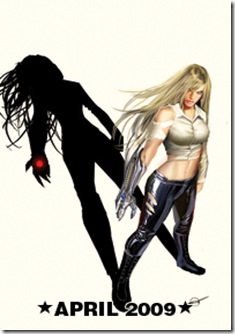Book Review: WHERE NIGHTMARES COME FROM . . . Words Of Wisdom On Writing
WHERE NIGHTMARES COME FROM (Crystal Lake Publishing, Kindle Edition and E-Pub versions published November 17, 2017) Non-fiction articles on horror and writing.
WHERE NIGHTMARES COME FROM serves as an excellent reference source for beginning writers, especially those with a concentration in horror. What better way to learn and absorb than to pick the brains of experienced veterans of horror fiction, poetry, screenwriting and teleplays? All those formats are discussed, as well as some answers to the question posed by the title: “Where Do Nightmares Come From?”, or more emphatically “Where Do Horror Writers Get Their Ideas?”
Every piece in this collection answers the title question in one fashion or another, while 21 of the 28 articles concentrate more on various aspects of writing: how to generate ideas, how to work your muse, storytelling techniques, seeing through your character’s eyes, writing with words that fit the story, choosing the right medium to tell a story, how to sustain horror through a lengthy novel, editing, advice on submitting and working with publishers, working with licensed properties, outlining, and much more.
However, the most appreciated feature of WHERE NIGHTMARES COME FROM is it’s absence of a textbook or academic approach to the subject matter. The answers and tips are offered through experience, observations, memoir, anecdotes, and heart-felt contributions.
You will recognize many of the authors and celebrities sharing their memories and lessons learned with readers. One only has to read through the contributor biographies at the end of the volume to realize what a stellar group of veterans the editors have assembled here. Recommended.
Disclosure: I received an advance digital copy of this book for review purposes.
The book begins appropriately with a short introduction by Grand Master William F Nolan, who summarizes the contents succinctly: “expert advice that only seasoned veterans can provide. . . . . . Dig into any section of this book and you will learn something.”
Regarding the question of what comprises horror and why is it important, there are several pieces examining this issue:
The most informative article is by Clive Barker in “A-Z OF Horror.”
In “What Scares You” veteran horror comics writer Marv Wolfman shares this: “Comedy and horror are to me, the only genres that, when done well, force you to react emotionally and not intellectually” and advises writers “you need to write for what makes you sweat.”
In “Why Horror?” Mark Alan Miller explains “In a world like this - a world filled with actual horrors - - I turn to heightened horrors, wrapped in metaphors that work out the things I’m feeling - - because I find that it provides hope, escape, and exorcism of the day’s demons all at the same time.”
In “Novel Roundtable Interviews” (with Kevin J. Anderson, Silva Moreno-Garcia and Christopher Golden interviewed by Eugene Johnson and John Palisano) Kevin J Anderson replies to the question of “what does horror bring as a genre that others don’t?” He says “It (horror) has a way of showcasing our fears, our sins, our mortality, in ways that other genres don’t . . . many genres deal with those questions, but horror makes them front and center.”
Jason V. Brock in “Life Imitating Art Imitating Life” provides an informative and philosophical treatise on film and its’ influence on reality.
On the subject of writing, there are many excellent pieces covering various aspects of the horror genre. My favorites were:
“It’s The Storyteller” by Joe R. Lansdale who states “the true storyteller generally has a broader and more successful impact than the pure plotter,” and advises “write as if everyone you know is dead — write for yourself.”
In “Like Farts And Curses” Ray Garton admits that “where do you get your ideas” is the question writers hate the most, and offers examples of how personal observations turned into ideas for stories.
Ten valuable rules of “Storytelling Techniques: The Many Faces Of Horror” are provided by writer/editor Richard Thomas.
Veteran Ramsey Campbell uses his own story (Hiding The Light, 2011) to examine the process of story construction in “The Process Of A Tale”.
Stephanie M. Wytovich offers a heartfelt memoir in “How I Spent My Childhood Looking For Monsters And Found Poetry” and explains poetry through anecdotes and personal examples.
I know I’ll return to this collection often as I work to improve my own writing and obtain valuable advice from the professionals included here. WHERE NIGHTMARES COME FROM is an essential guidebook that should be on the shelf of every writer’s library.





Comments
Post a Comment